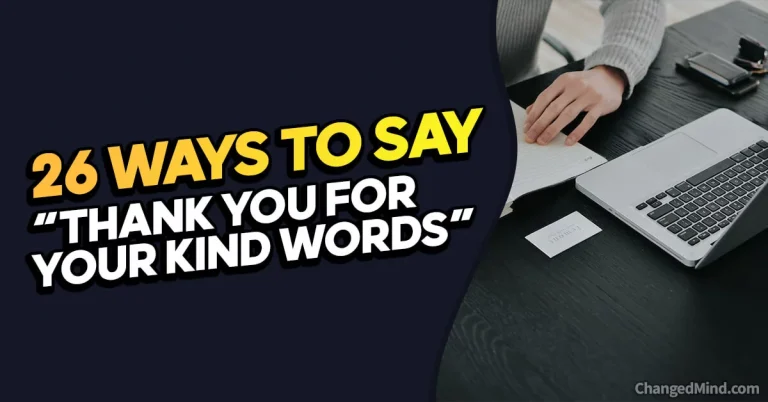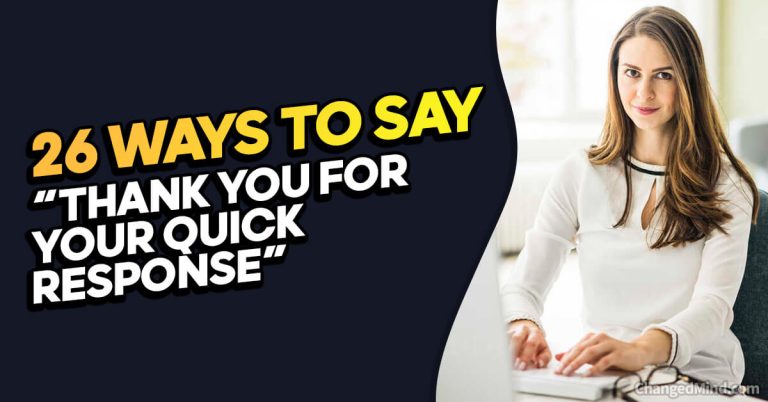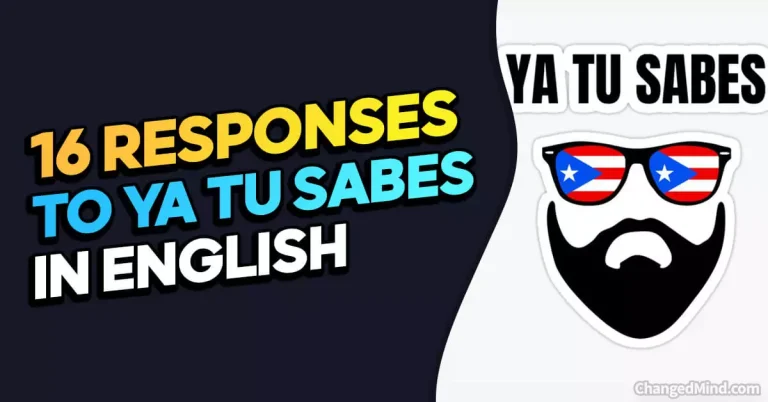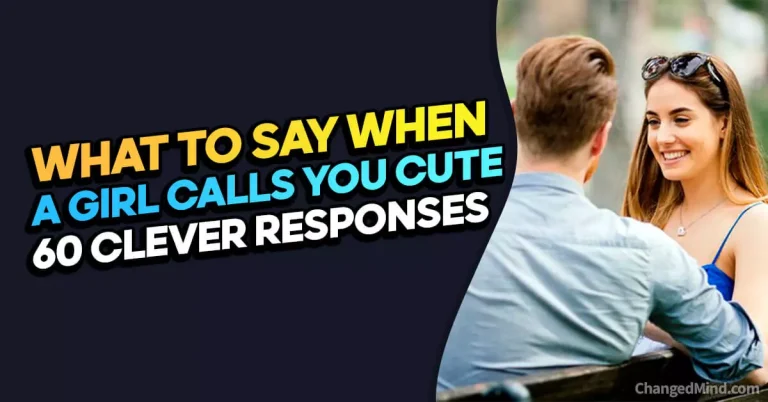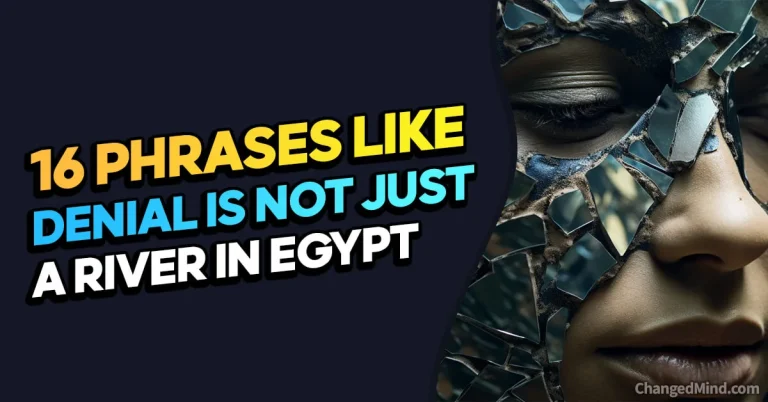Picture this: You’re strolling down the street, and a friend pops up with the classic, “What’s good?” How do you respond?
Whether it’s a casual encounter or a virtual chat, mastering this everyday exchange can turn mundane moments into memorable ones.
In this article, “How To Respond To ‘What’s Good’: 15 Top Answers,” we’re serving up a buffet of witty, engaging, and downright cool responses to make your “What’s good?” conversations truly pop! 🚀🗣️
The short answer? You’re about to discover 15 clever and playful ways to reply, turning small talk into big smiles.
Why keep reading? Because you’ll not only master the art of responding but also add a dash of charm and humor to your interactions, making every encounter a delightful one. Ready to take your “What’s good?” game to the next level? Let’s roll! #HowToRespondToWhatsGood
Key Points:
- Elevate your responses to “What’s good?”
- Make your small talk engaging and memorable.
- Add charm and humor to your interactions.
- Master the art of casual conversation.
When it comes to dating and relationships, communication is key. And a big part of communication is being able to respond confidently and effectively to questions or statements from your partner.
One such question that you’re likely to hear quite often is “What’s good?” It may seem like a simple enough question, but how you respond to it can reveal a lot about your personality and communication style.
In this article, we’ll be discussing how to respond to “What’s good?” in a way that will help you build better connections with your partner.
Understanding the Intent behind “What’s Good”:
When someone asks “What’s good?”, it’s important to understand the different intentions behind the question.
By doing so, you can respond appropriately and build better connections with the person who asked.

Here are some common intentions behind the question and examples of situations where you might hear it:
- Genuine interest: The person asking may be genuinely interested in your well-being and want to know how you’re doing. For example, if you’re having a tough day, your partner might ask you “What’s good?” to show that they care and want to support you.
- Starting a conversation: “What’s good?” is a conversation starter that can lead to more in-depth discussions. For instance, if you’re meeting someone for the first time, they might ask you “What’s good?” to get to know you better and find common ground.
- Small talk: The question can also be used as a way to make small talk or fill in awkward silences. For example, if you’re waiting in line at a coffee shop, the person in front of you might ask you “What’s good?” to break the ice and start a conversation.
- Checking in: The question can also be a way to check in with someone and see if they need help or support. For instance, if your friend is going through a tough time, they might ask you “What’s good?” to see if you’re available to talk or offer assistance.
Understanding the intent behind “What’s good?” is an important aspect of communication. It can help you tailor your response to the situation and build better connections with the people in your life.
Techniques for Responding to “What’s Good”:
Now that you understand the intentions behind “What’s good?”, let’s explore some techniques for responding to the question in a way that will help you build better connections with others.
- Active listening and observation: One of the most effective techniques for responding to “What’s good?” is to actively listen and observe the situation before responding. Take a moment to assess the context and the person’s tone of voice. Then, provide a genuine response based on what you observe. For example, if you notice that your partner seems stressed, you might respond with “Not much, just trying to unwind after a busy day.”
- Providing a genuine response: Another effective technique is to provide a genuine response based on how you’re feeling. Being honest and authentic can help you build trust and deepen your connection with the person who asked. For example, if you’re having a great day, you might respond with “Everything’s great! I had a really productive day at work and I’m looking forward to spending the evening with you.”
- Responding with enthusiasm and positivity: Responding with enthusiasm and positivity can create a positive atmosphere and make the other person feel good. This can help to build a stronger connection and improve the mood of the conversation. For example, if you’re feeling upbeat, you might respond with “Life is good! I’m feeling great and excited about what’s ahead.”
- Using humor or wit: Using humor or wit can be an effective way to respond to “What’s good?” and create a fun, lighthearted atmosphere. For example, if you’re feeling playful, you might respond with “Not much, just trying to keep up with you – you’re always on the go!”
Using these techniques can help you respond confidently and effectively to “What’s good?” and build stronger connections with those around you.
How To Respond To “What’s Good”: 15 Top Answers
- “Not much, just enjoying the beautiful weather today. How about you?”
- “Everything is going great! I’m excited about a new project I’m working on.”
- “I’m doing well, thanks for asking. I just got back from a great vacation.”
- “What’s good? Well, I just tried a new restaurant that was amazing.”
- “Things are good, just staying busy with work. How about you?”
- “I’m doing fantastic, thanks for asking! What’s been good with you lately?”
- “I’m doing pretty well. Just trying to stay positive and focus on the good things in life.”
- “Not much, just enjoying some downtime. How about you?”
- “I’m doing great, thanks for asking. I just got a promotion at work.”
- “What’s good? Well, I’m looking forward to a weekend getaway with some friends.”
- “I’m doing well, just trying to stay active and healthy. How about you?”
- “What’s good? Well, I just finished a great book that I highly recommend.”
- “I’m doing great, thanks for asking. Just trying to make the most of every day.”
- “Not much, just trying to stay positive and focus on the good things in life. How about you?”
- “What’s good? Well, I just discovered a new hobby that I’m really enjoying.”
Avoiding Common Mistakes
While there are effective techniques for responding to “What’s good?”, there are also some common mistakes to avoid.
By being aware of these mistakes, you can ensure that your responses are confident, engaging, and effective.
- Overusing clichés or generic responses: One mistake to avoid is overusing clichés or generic responses. Responding with generic phrases like “Not much” or “Same old, same old” can make you appear insincere or uninterested in the conversation. Instead, try to provide a more thoughtful response that shows you’re engaged and interested in the conversation.
- Being too vague or impersonal: Another mistake is being too vague or impersonal in your response. For example, if someone asks “What’s good?” and you respond with “Everything’s fine,” it can make it seem like you’re not interested in the conversation. Instead, try to provide a response that’s more specific and personalized to the situation.
- Failing to acknowledge the question or the person who asked it: A common mistake is failing to acknowledge the question or the person who asked it. If you respond to “What’s good?” with a completely unrelated topic or fail to acknowledge the person who asked the question, it can come across as rude or dismissive. Instead, try to provide a response that shows you’re actively listening and engaged in the conversation.
By avoiding these common mistakes, you can respond confidently and effectively to “What’s good?” and build stronger connections with the people in your life.
Examples of Effective Responses
To help you respond confidently and effectively to “What’s good?”, here are some examples of responses that align with the different intentions behind the question:
- Genuine interest: If someone is genuinely interested in your well-being, they might ask “What’s good?” as a way of checking in on you. In this situation, an effective response might be something like “I’m doing well, thanks for asking! I had a great workout this morning and I’m feeling energized.”
- Starting a conversation: If someone is using “What’s good?” as a conversation starter, it’s an opportunity to find common ground and build a connection. An effective response might be “Not much, just finished reading a great book. What kind of books do you like to read?”
- Small talk: If someone is using “What’s good?” as a way to make small talk or fill in an awkward silence, an effective response might be something like “Just trying to stay cool in this heat! How about you?”
- Checking in: If someone is using “What’s good?” as a way to check in with you and see if you need help or support, an effective response might be “I’m doing okay, thanks for asking. I’ve been feeling a bit overwhelmed lately, but I’m working on managing my stress.”
Suggestions for tailoring responses to specific situations or individuals:
Keep in mind that the way you respond to “What’s good?” may vary depending on the situation or the person who asked. Here are some suggestions for tailoring your responses:
- Be authentic: Always strive to provide a genuine response that reflects how you’re feeling. This can help you build trust and deepen your connections with others.
- Consider the context: Before responding, take a moment to assess the context of the situation. Is the person asking genuinely interested in your well-being, or are they just making small talk?
- Use humor or wit: Using humor or wit can be an effective way to respond to “What’s good?” and make the conversation more lighthearted and fun.
By tailoring your responses to the situation and the person who asked, you can respond confidently and effectively to “What’s good?” and build stronger connections with the people in your life.
Conclusion
In this article, we explored the question “What’s good?” and techniques for responding to it confidently and effectively.
We began by understanding the different intentions behind the question and provided examples of situations where you might hear it.
We then discussed techniques for responding, such as active listening and observation, providing a genuine response, responding with enthusiasm and positivity, and using humor or wit.
Additionally, we covered common mistakes to avoid when responding and provided examples of effective responses tailored to different situations.
Effective communication is essential in dating and relationships, and responding confidently and effectively to questions like “What’s good?” can help you build stronger connections with others.
By actively listening, providing genuine responses, and tailoring your responses to the situation, you can create a positive and engaging conversation.
In conclusion, remember to be authentic, consider the context, and avoid common mistakes when responding to “What’s good?”
Practice implementing the techniques discussed in this article to become a more confident and effective communicator. With these skills, you can build stronger connections and relationships in all areas of your life.
FAQ
What are some good ways to respond to “What’s good?”
Some good ways to respond to “What’s good?” include actively listening and observing, providing a genuine response, responding with enthusiasm and positivity, and using humor or wit.
Why is it important to respond confidently to “What’s good?”
Responding confidently to “What’s good?” can help build stronger connections with others and improve the mood of the conversation. Effective communication is essential in dating and relationships.
How can I avoid being too vague or impersonal when responding to “What’s good?”
Avoid being too vague or impersonal by providing a more thoughtful response that shows you’re engaged and interested in the conversation. Try to provide a more specific and personalized response.
What are some common mistakes to avoid when responding to “What’s good?”
Common mistakes to avoid when responding to “What’s good?” include overusing clichés or generic responses, being too vague or impersonal, and failing to acknowledge the question or the person who asked it.
How can I tailor my response to “What’s good?” to specific situations or individuals?
Tailor your response to “What’s good?” by being authentic, considering the context, and using humor or wit. Think about the situation and the person who asked the question and respond accordingly.


